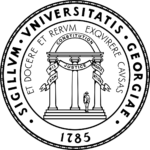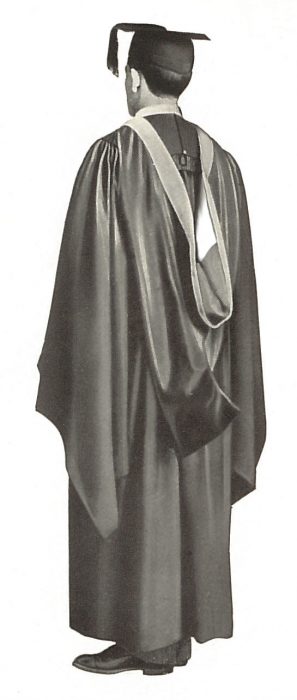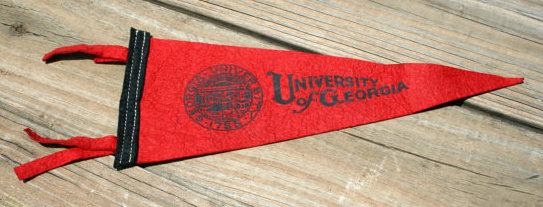University of Georgia
Georgia
1785


The University of Georgia literary societies selected crimson, black, and old gold as the university colors between 1885 and 1891, but in descriptions from the period, crimson is sometimes described as “red” and old gold is sometimes described as “orange” or “yellow”. At about the same time, Georgia Polytechnic Institute selected white and gold as its school colors. At an 1893 football match between the two athletic rivals, Georgia Tech supplied white and gold ribbons to visitors from the Lucy Cobb Institute, an all-girls school located near the University of Georgia campus, which infuriated the University of Georgia men to such a degree that within a year they stopped using old gold, leaving crimson and black as the remaining colors for the university. Thereafter crimson was more often described as “red” in university materials.
Citations in the World Almanac (listed by cover date; color information is from the previous year): red/black (1895-1935)




The Intercollegiate Bureau of Academic Costume (IBAC) was affiliated with the academic costume firm Cotrell & Leonard, and one of the partners in this firm, Gardner Cotrell Leonard, was also the Director of the IBAC. So one way to estimate the date a school was assigned a hood lining pattern by the IBAC is to note when that school was first advertised as being a client of Cotrell & Leonard. The University of Georgia first appeared in a Cotrell & Leonard advertisement in the November 1898 edition of The Intercollegian, indicating an IBAC registration date for Georgia’s hood in 1897 or 1898.
The advertisement did not describe the actual color pattern used in the college’s hood; this is not found in an IBAC list until 1927. In that list, Georgia’s hood was described as “cardinal above black”, suggesting a “per chevron” heraldic division the IBAC had been employing for some hoods since 1895. An IBAC list from 1969 confirms that the red and black in Georgia’s hood was divided per chevron and not another type of horizontal division like “per reversed chevron” or “per bar”.
One should note that the IBAC described Georgia’s hood in the 1927 list as being “cardinal”, not crimson or red, so the IBAC probably used a parti per chevron division of Georgia’s colors because Wesleyan University had already been assigned a hood lined cardinal with a black chevron and Ohio Wesleyan University had already been assigned a hood lined black with a cardinal chevron.